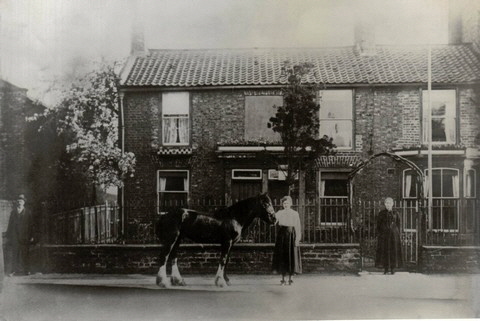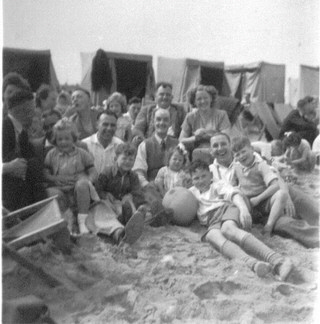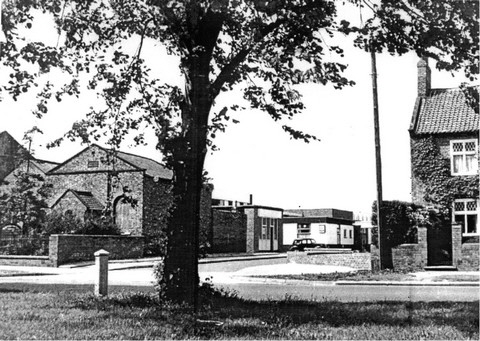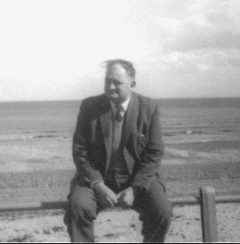Haughton-le-Skerne Working Men’s Club
Remembering Haughton-le-Skerne Working Men’s Club
This lovely club history is more or less word for word what Carol Atkinson recently sent in to us. Carol runs a local history society in County Durham and she “came across the Club Historians website quite accidentally whilst looking for articles relating to my local working men’s club. I was delighted to discover a wealth of fascinating stories about the social history of club life across the country.”
Carol was born and has lived all of her life in the village of Haughton-le-Skerne, which is now part of a suburb of Darlington.
“My family, including my grandfather, parents, aunts, uncles (sadly no longer with us) and numerous cousins have spent many happy hours at Haughton-le-Skerne Working Men’s Club on The Green. A number of them were life members; firstly going to the original club, and then to a newly built club from the 1970’s onwards.
Some of my earliest childhood memories are of times spent with my family at the Club, which at that time was an integral part of the village social life. These memories are full of fun, laughter and friendship.
Twelve years ago in 2002 I wrote down a few of these memories, which I hope you may enjoy reading too!”
Haughton-le-Skerne Working Men’s Club
Robert Hodgson was a founder member of the Northgate Working Men’s Club at nearby Darlington. In 1903 Robert decided to establish a similar club in Haughton. To do so, he purchased two houses situated in the gap that now exists between the Methodist Chapel and Skerne Lodge on Haughton Green.
In 1939, Cath Wilson’s brother Arthur Marshall, invited her husband Charlie to wander down to Haughton-le-Skerne Workingmen’s Club for a pint.
Left to right: Robert Hodgson, with daughter Florence and wife Mary, outside the original club
 |
Shortly after this Charlie was nominated to become a member and by doing so was welcomed into the fold, which can probably best be described as being ‘a community within a community.’ In fact this was the start of a life-long relationship for Charlie not only with the club but also with other members.
The club in those days was based in a cottage, situated between the Methodist Chapel and Skerne Lodge. One of the downstairs rooms was a men-only bar: ladies were not allowed to enter.
Another room, the lounge, doubled up as a library where villagers could take books in to exchange or to borrow. The upstairs rooms were used as living quarters and there were also gardens to the rear. This land was split up into plots lovingly tended to by members.
A decision was made to extend and modernise the club as membership increased, at which time a concert hall and billiards room were added to the building. Charlie and Cath were often joined by her brother-in-law and sister Stan & Joyce High and her brother and sister-in-law John & Irene Marshall. In fact it was very much a family affair involving their children too.
A yearly day out to the seaside became a regular event. Participants including mothers, fathers,
 brothers, sisters and friends were bundled onto coaches, which then trundled along in a convoy.
brothers, sisters and friends were bundled onto coaches, which then trundled along in a convoy. Over the years the day-trippers visited Redcar, Saltburn and Seaburn, to name a few of the seaside resorts.
This photo was taken on the beach at Redcar. Charlie and Cath can be seen in the photo (slightly off centre and to the rear) smiling towards the camera. Stan, Joyce, John and Irene with all their respective children are also present. Redcar 1953
Once on the bus, songs such as ‘ten green bottles’ would fill the air. Children and grown-ups alike would excitedly attempt to be the first person to spot the sea as it came into view. Carol, Charlie’s niece remembers that both her and her sister Pat used to worry in case they needed to ‘spend a penny’ on the journey.
Once at the seaside everyone headed straight to the beach. Children taking or buying ‘buckets and spades’ on route. Dads hired tents and deckchairs, which were then arranged grouped together by the trippers. Mams would take shopping bags filled with towels, bathing costumes and a change of clothing for their children. Best of all would be large tins full of different types of sandwiches – big favourites were always egg and tomato. Children would run in and out of the sea or build sandcastles. Grown-ups often rolled up trouser legs paddled along the seashore.
The amusement arcades on Redcar promenade were always popular. Once inside the children would make a beeline for the ‘one armed bandits’ using up their pocket money saved for the trip. There was also the added attraction of a boating lake and roundabouts to add to the adventure. And let’s not forget the donkey rides! In addition there was bingo for the ladies and sometimes a quick pint at the local WMC for the men. Charlie particularly enjoyed stopping at the little stalls that sold fresh seafood to eat, including lobster, crab, cockles and mussels.
Saltburn, situated in a cove (with a history steeped in smuggling), had the added attraction of a pier. This stretched majestically out into the sea, where fishermen could be seen at the far end casting their lines. There were also carriage style lifts that passed one another going up and down the cliff side carrying their occupants in true Victorian style. Last but not least were the Italian gardens where visitors could take a ride on the miniature railway.
There were so many exiting moments and so much to do and see! At the end of the day the trippers would arrive back home in Haughton extremely tired but also very happy.
Another yearly event that was the annual flower and vegetable show, with members competing proudly for prizes. Their produce was either grown in their own gardens or on the plots tendered lovingly to at the rear of the club. John Marshall’s specialities were the beautiful chrysanthemums and dahlias, often admired in his garden in Welbeck Avenue.
In the early 1970’s the original club was knocked down and a larger, modern club built on the rear of the Methodist chapel. Sadly, the gardens became a thing of the past when the land was turned into a car park for club members.
 |
Haughton-le-Skerne Working Men’s’ Club early 1970’s (white building)
The gap between the Chapel and Skerne Lodge to its right is where the original club stood.
The club (as it is fondly referred to) has always been popular and for some villagers it is a way of life. Friends can wander down for a drink and a chat in the bar or may be for a game of cards or dominoes. Ladies and men alike enjoy taking part in the bingo and dancing, or simply watching the entertainment provided.
Charlie, Cath, John and Irene enjoyed dancing so much that at one point they enrolled at a dancing school in Grange Road, Darlington, in the attempt to improve their skills. Joyce would have liked to go along too, but Stan worked away from home. Stan also used to joke that he had ‘two left feet’ that weren’t a lot of good for dancing.
In addition to the family members who regularly attended the club together Charlie and Cath had a group of friends who also used to sit with their party. They included: Milly and Billy Waites, their daughter Milly and husband Clive. Also there was Mr & Mrs Hammond who lived on the corner of Stockton Road/ Whinfield Road, but later moved away from the Darlington area.
The first of the party to get to the club, would ‘keep seats’ for the remainder of the friends. Items such as coats and jackets were laid down along the seats, in the attempt to make them appear occupied, until everyone else arrived. In addition regulars also liked to sit in the same seats, which at times caused minor disagreements between members and still does today in 2002!
 In this photograph you can see Charlie Wilson enjoying a day out on one of the many club trips. Charlie, who continued to use the club until he was 90, died at the age of 93 on 26th November, 2002.
In this photograph you can see Charlie Wilson enjoying a day out on one of the many club trips. Charlie, who continued to use the club until he was 90, died at the age of 93 on 26th November, 2002. Carol Atkinson, his niece, still has all of his club cards.
Written by:
Carol Atkinson
(Charlie’s niece)
2002
Club Historians wishes to thank Carol Atkinson for this beautifully written history of a great club. We know it will strike a chord with readers, prompting memories of their own clubs with great fondness. It is a reminder that wherever you find a club, you find community, family gatherings and a sense of belonging.
